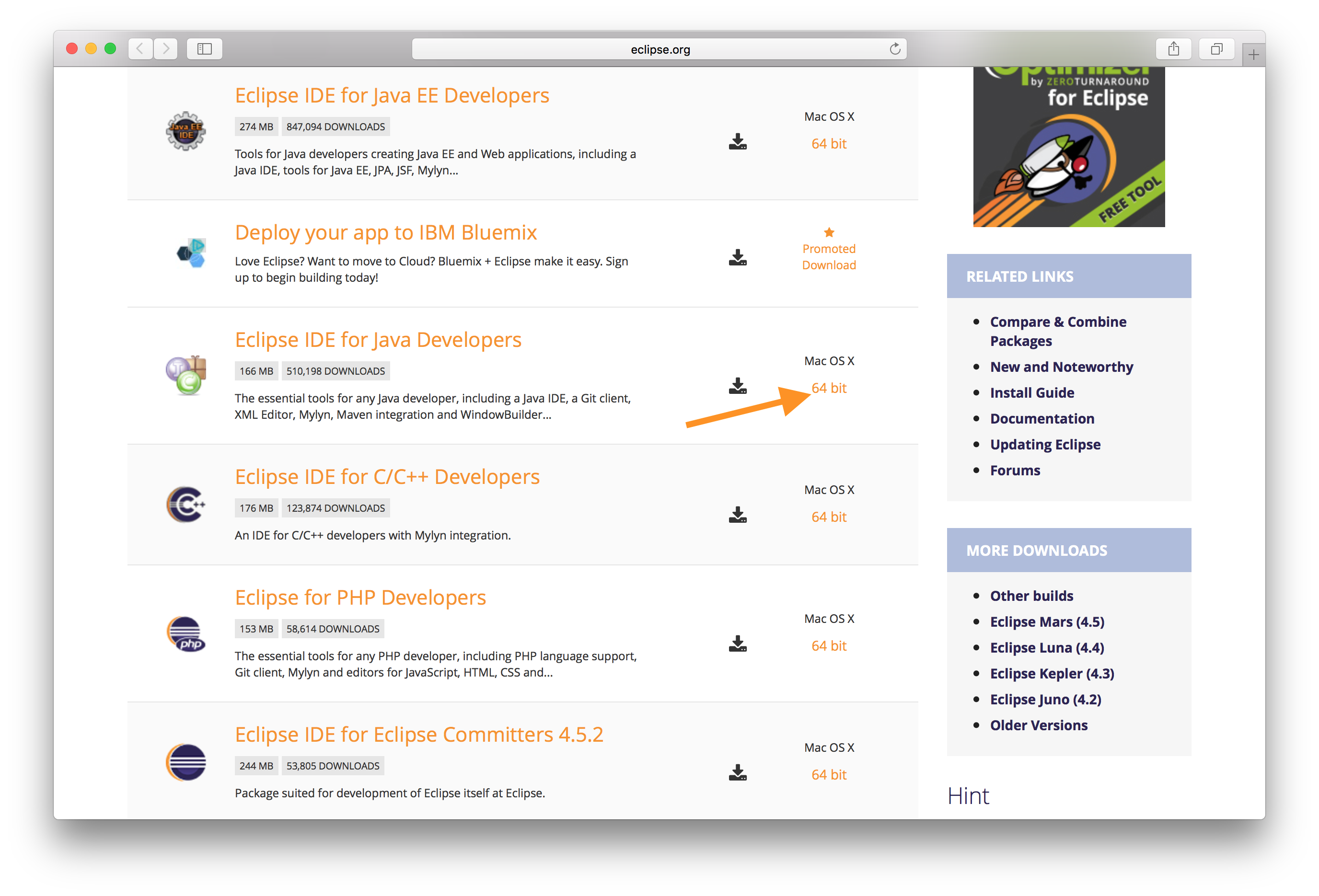
- #Eclipse os x where to find etc install#
- #Eclipse os x where to find etc software#
- #Eclipse os x where to find etc mac#
Windows and Linux users: You can supply the -vm parameter as well if you want to run Eclipse using another VM, like the JDK 1.5 for example. eclipse -debug -consoleLog -vmargs -Xmx256M ) But just in case you do, use something like. Linux users: You probably already Eclipse from the command line and you probably don’t need my help doing it. In this bat(ch) file, include: eclipse.exe -debug -consoleLog -vmargs -Xmx256M Windows users: You can also run Eclipse from the command line, but you have to make an eclipse.bat file by hand. eclipse -vm Eclipse.app/Contents/MacOS/java_swt -debug -consoleLog -vmargs -Xmx256M Here is a nicer version, which lets you see System.out and System.err, as well as Eclipse debug statements, and shows how you can pass in arguments to the underlying VM. You can find out more at the Eclipse Bugzilla, bug 40003. The reason why this works is because of a special version of the Java launcher that accommodates SWT’s needs on OS X. eclipse -vm Eclipse.app/Contents/MacOS/java_swt The reason why is due to an obscure implementation of how threading works in the Apple Java Runtime and how it interacts badly with SWT’s (and thus Eclipse’s) expectation of how it should be running. If you just type “eclipse”, you’re in for a rude awakening, as you won’t be able to interact with the UI and you’ll be forced to Control-C. Well, it’s actually just a symbolic link into the Eclipse.app (the nicely packaged Eclipse application that I mentioned above.)
#Eclipse os x where to find etc install#
When you go into your Eclipse install directory, you’ll find a nice executable named appropriately enough: “eclipse”. However, if you’re a hardcore programmer, then you really should get your hands dirty with the command line via OS X’s Terminal. With Eclipse, this shows up as the Eclipse icon that we know and love.
#Eclipse os x where to find etc mac#
The line following it shows which Java binary is used.The Mac is very easy to use due to its innovative packaging system for applications, where it hides an entire tree of directories inside one file/icon.

In some Linux versions the file can be found at "/usr/share/eclipse/eclipse.
#Eclipse os x where to find etc software#
If you installed Eclipse via terminal or software center the location of the file is "/etc/eclipse.ini" file is just inside the unpacked folder. If you downloaded Eclipse IDE manually from internet the "eclipse.

In respect to this, where is Eclipse ini Linux?

app/Contents/ Eclipse for modern Eclipse releases (Mars / Neon / Oxygen). On Mac OS, it's inside the application folder at Eclipse. ini is located in your Eclipse installation directory. If you are on Windows or Linux, the eclipse.


 0 kommentar(er)
0 kommentar(er)
